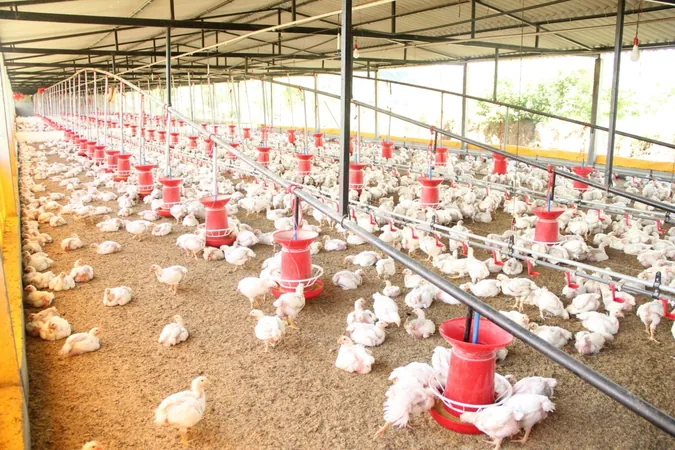
URGENT: Stay Alert! Avian Flu Outbreak Hits Global Bird Populations – What You Need to Know!
2025-03-30
Author: Emma
As many are already aware, the outbreak of avian influenza is causing alarm around the world, and it's crucial that we remain vigilant in our efforts to monitor the situation. Since its emergence in 2022, avian flu has spread to 108 countries, leading to the tragic loss of over 300 million birds as of December 2024. This outbreak is not just a threat to our avian friends; it poses potential risks to livestock and humans as well.
Chickens and H5N1 Variants
Chickens, in particular, have shown extreme vulnerability to certain strains of avian flu, such as H5N1, resulting in mortality rates reaching near 100% in some outbreaks. However, the current variant is not transmitted from humans to humans, which is a small relief. Yet, scientists warn that mutations could alter this and create new risks.
Wild Migratory Waterfowl as Carriers
Notably, wild migratory waterfowl like ducks and geese are natural carriers of avian influenza, often harboring low pathogenic strains that can mutate into more dangerous variants. Species such as mallard ducks, northern pintails, and Canada geese have been identified as particularly susceptible. Additionally, recent findings have detected H5N1 in livestock, including dairy cows and goats, highlighting the far-reaching implications of this avian threat.
Risk of Transmission to Humans
It's important for bird lovers to note that while the transmission of avian flu to humans is rare, it can occur through direct contact with infected birds, contaminated surfaces, or via inhalation of airborne particles. Fortunately, the risk is significantly reduced when consuming thoroughly cooked poultry and eggs, as confirmed by the Government of Canada.
Pet Owners' Precautions
Pet owners should also be cautious, as cats can become infected with bird flu, albeit at a low risk level. If you suspect your cat may have been exposed, you might notice symptoms like lethargy, discharge from the eyes and nose, or difficulty breathing. Keeping your pets indoors can greatly reduce their risk of infection while also protecting local wildlife.
Monitoring and Prevention
Interestingly, the transmission rate of avian flu to songbirds remains low, at around 3%. However, continuous monitoring will be essential, particularly if testing increases or if virus mutations occur. Currently, there is no directive from the U.S. Department of Agriculture or the Canadian Government to remove bird feeders, unless they attract domestic animals. It's wise, however, to clean feeders and baths regularly to prevent a variety of avian diseases.
In closing, as Dr. Lovejoy, a prominent American ecologist, aptly states, “If you take care of birds, you take care of most of the problems in the environmental world.” By staying informed and cautious about the avian flu outbreak, we can help protect our feathered friends and safeguard our ecosystems.
Stay updated, and take action—let's come together to mitigate this outbreak! 🌍🐦









 Brasil (PT)
Brasil (PT)
 Canada (EN)
Canada (EN)
 Chile (ES)
Chile (ES)
 Česko (CS)
Česko (CS)
 대한민국 (KO)
대한민국 (KO)
 España (ES)
España (ES)
 France (FR)
France (FR)
 Hong Kong (EN)
Hong Kong (EN)
 Italia (IT)
Italia (IT)
 日本 (JA)
日本 (JA)
 Magyarország (HU)
Magyarország (HU)
 Norge (NO)
Norge (NO)
 Polska (PL)
Polska (PL)
 Schweiz (DE)
Schweiz (DE)
 Singapore (EN)
Singapore (EN)
 Sverige (SV)
Sverige (SV)
 Suomi (FI)
Suomi (FI)
 Türkiye (TR)
Türkiye (TR)
 الإمارات العربية المتحدة (AR)
الإمارات العربية المتحدة (AR)